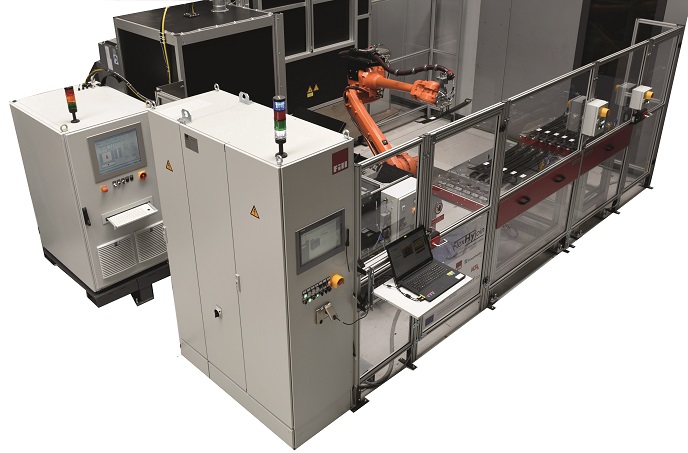Combined technologies for hybrid composite car parts
The production cell is located at the site of an industrial partner in the EU-funded FlexHyJoin (Flexible production cell for Hybrid Joining) project and continues to efficiently produce composite roof stiffener parts for cars. Though the project was officially completed at the end of December 2018, the consortium envisions that the cell will operate for at least another three years, allowing potential customers of project partners – from the automotive sector and elsewhere – to come and visit and for other composite materials to be tested. “The production cell is a demonstrator that shows the capability of the two joining technologies induction and laser joining in combination with an online process control and non-destructive testing,” explains FlexHyJoin project coordinator Nora Feiden from the Institute for Composite Materials (IVW GmbH) in Germany. “Until now there has been keen demand, and one of our partners has already identified two potential customers.” New possibilities Composite materials open the door to new possibilities across a range of industrial sectors by combining the best properties from each constituent ingredient. They surround us every day; plastic polymers mixed with natural, glass or carbon fibres for example are used to make the kind of strong lightweight material you might find in sports equipment, building surfaces and airplanes. “Composites are well known in the areas of renewable energies, e.g. in the blades of wind power stations or sports and recreation such as in the manufacture of bicycles,” notes Feiden. “But in most applications a very strong and form-fit connection between the existing metal structure and plastic part is required. This is where FlexHyJoin comes in. We focused on the use of composite materials in the automotive sector though, because demand to reduce CO2 emissions in transport is very high. One way of achieving this is by making vehicles lighter by substituting parts of them with hybrid composite materials.” Building up potential The FlexHyJoin project built on a previous lab-scale project to create a pilot-scale flexible production cell capable of manufacturing composite car parts. “We developed the production technology with a car component as a spin-off product,” says Feiden. “The first challenge we faced was deciding what part we should use to demonstrate the technology. We wanted to focus on something applicable to everyday mass production passenger cars, and so we settled on a roof stiffener.” Roof stiffeners are usually made completely out of metal. The FlexHyJoin team substituted this with a lightweight glass fibre reinforced polymer composite with three metal brackets that then attach the stiffener to the car body. This was achieved by using a laser to join two of the fasteners, and by applying induction joining to the middle fastener. “We combined these two joining technologies because laser joining is ideal for smaller parts with a complex geometry,” Feiden explains. “And induction is the fastest method for bigger parts that are not so complex.” All the individual process steps – from laser surface texturing through to laser joining, induction joining and an online process control – were integrated into a fully automated production cell. Material flow was then optimised in order to provide each step with an effective process time to achieve an optimal result. In addition to the project’s specific material combination of glass fibre reinforced polymer and steel, an extensive range of other materials can also be handled by the cell after adaptation. Representatives from the car industry have already been expressing an interest in the process. “The technologies themselves already existed,” says Feiden. “What we’ve done in this project is shown that producing hybrid composite parts is possible by combining these different techniques. One of the major advantages of this EU-funded project was that it brought together different competences from five different EU countries.”
Keywords
FlexHyJoin, automotive, hybrid, industrial, composite, polymer, laser







